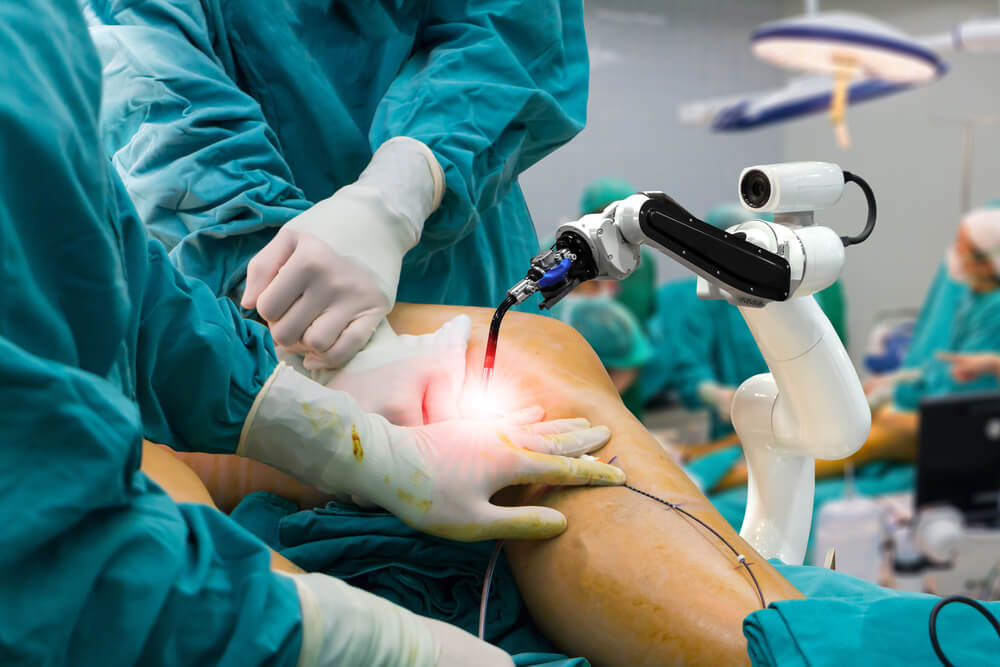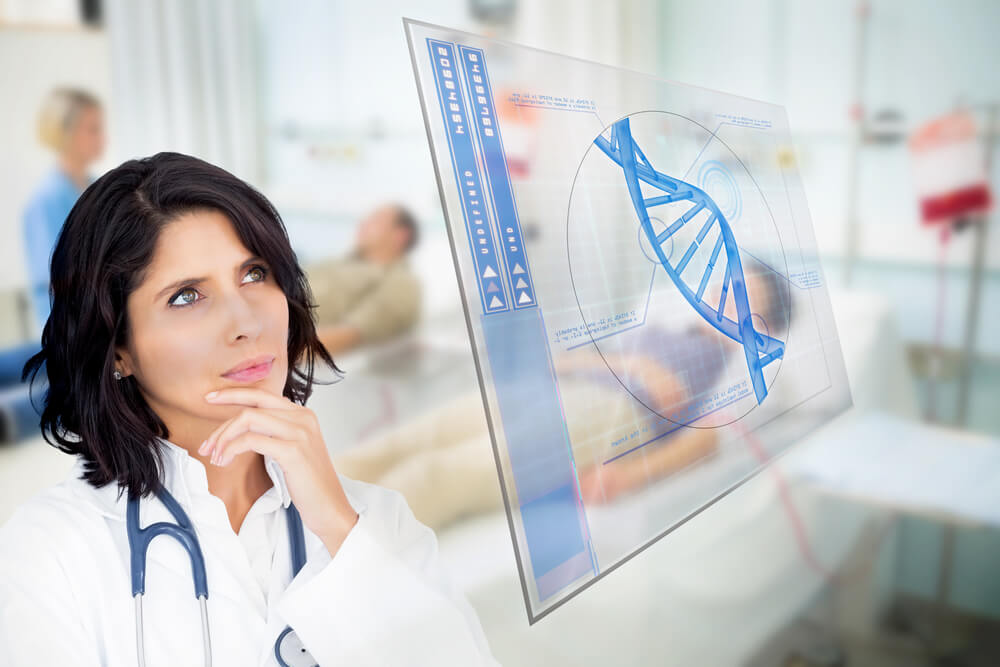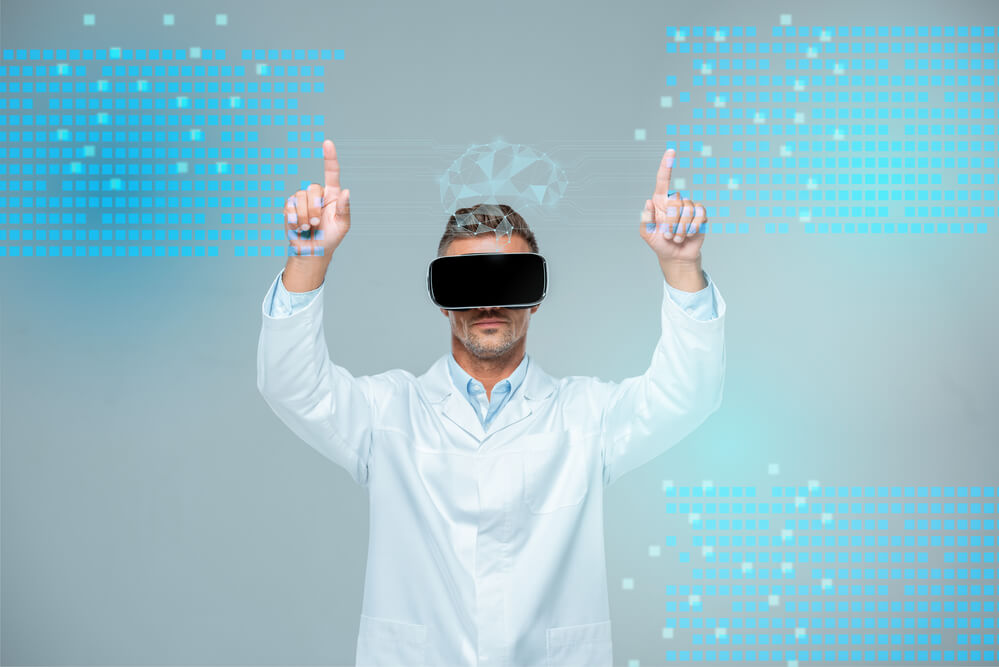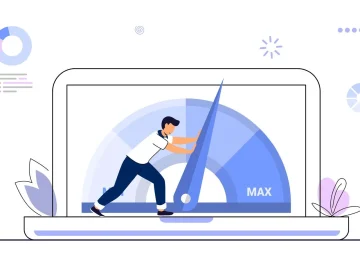Get a detailed overview of major technologies and trends that will rule the digital healthcare industry in the foreseeable future.
Digital Healthcare Overview
Healthcare shifts the boundaries of the hospital walls. We’re in the middle of a digital revolution where IT innovations take leading positions complying with key business transformation expectations and fitting market needs.
The concept of personalized care dominates the healthcare industry right now. No wonder that sector stakeholders aim to deliver smart technology-enabled and client-centered solutions.

Don’t even try to deny that you can imagine your world today without information technology. Gradually it becomes an intrinsic part of the patient’s life inside and outside the hospital walls.
Better appointments and procedures coordination, easy sharing of test results, comprehensive treatment plans and, as a result, improved patient experience, advanced costs management, and enhanced clinical outcomes. This is the collaboration between digital technologies and healthcare.
Sounds good, right? According to the forecast, digital health market, valued at 80 billion U.S. dollars back in 2015, is likely to grow up to 206 billion U.S. dollars by 2020.
The mobile and wireless health market of the Asia-Pacific region will dominate this rise, while the mobile health segment is predicted to produce the second largest revenue share (about 46 billion U.S. dollars in 2020).
Putting these numbers aside, it becomes clear that questioning data systems integrity and security of personal information, people, nevertheless, focus on efficient healthcare expenditures, require more transparency and easier access to a qualified medical help.
Mobile health applications and services can perfectly meet the case.
What other digital health trends for 2019 are worth following? We all understand the potential of Big Data, AI (Artificial Intelligence) and VR/AR (Virtual Reality/Augmented Reality). Let’s try to predict how they can impact the future of healthcare.
Big Data and Analytics
Any doctor will confirm that it’s easier and not very expensive to treat a disease at an early stage. But how to collect, analyze and actually discover warning signs of a serious illness? The answer to these How’s is Big Data. It transforms and enhances the healthcare industry with every passing year taking the first place in the list of digital health innovations for 2019.

Big Data is a large volume of information that can be gathered and analyzed to discover certain patterns and tendencies. Applied to healthcare, it allows to structure data, convert it into relevant insights, calculate and predict the probability of occurrence, treatment, and consequences of deviations and diseases.
Big Data grants an immense life-saving potential, making healthcare smart, helping prevent epidemics and reduce maintenance and medication costs.
Other benefits include:
- Faster access to precise treatment methods.
- Error minimization and costs reduction.
- Enhanced services and procedures.
- Improved customer involvement.
Look at healthcare mobile apps. New integrated Big Data-based solutions can collect, process, combine, save and analyze large data volumes for any specific purpose.
These are some of the most popular applications of this technology in medicine:
- EHRs or Electronic Health Records. They contain demographics, laboratory test results, diagnoses, medications, etc. Only authorized users can reach these records via secure information systems. They not only streamline the workflow and reduce the paperwork but also notify a patient to follow his prescriptions, visit a doctor or get a new lab test.
- Faster cancer treatment. Receiving access to various patient databases (hospitals, universities, and nonprofits) and using the big data analytics potential, researchers can get an overview of numerous treatment plans and analyze recovery index to define medication approaches of the cancer patients with the highest success rates.
- Improved staffing and hospital administration. Big Data provides solutions for running a complicated administrative process in a hitch-free manner. Healthcare providers get structured insights from diverse data sources and can plan optimal workers involvement during crises, like epidemic outbreaks and natural disasters, as well as to keep the balance between unnecessary labour costs and poor customer service.
IoMT (Internet of Medical Things)
IoT (Internet of Things) refers to intelligently connected devices able to interact and exchange data. Many industries leverage this technology and it has become a familiar notion we can hear almost everywhere.
Healthcare is also actively adopting IoT introducing the concept of the Internet of Medical Things (IoMT). More than that, it’s one of the top digital health trends for 2019.
This technology introduced patient-oriented devices that perfectly fit individual physiological requirements, gather and transmit vital data in real time. Smart wearable and take-home medical devices along with mobile healthcare apps not only ensure communication with medical experts but also help to monitor health status (cardiac monitoring), measure glucose and blood pressure, set notifications or alerts to take medications.

AppleWatch and its analogs made a real revolution resulting in huge cost savings. Who could imagine that a single watch can replace up to ten medical devices and clinical tests? Little wonder this technology continues to evolve ensuring affordability and reliability of individual data-driven treatment.
A patient keeps a continuous contact with his doctor, and doctor, in his turn, can easily access and check patient-generated data, able to tell far more than a series of periodic hospital visits.
The Life4me+ app is a great example of patient-doctor collaboration and the main IoMT benefits described above.
Will this technology stop on the healthcare industry? Highly unlikely. Other spheres including business and manufacturing can also benefit from regular health status monitoring to track employees activity, optimize the workload and study the impact of external factors on personnel.
Telehealth (Telemedicine)
Telemedicine allows to provide online consultations by means of video and audio communications without a need to be physically present at the doctor’s office. People from remote locations get access to proper medical services. Doctors, adopting the latest telemedicine initiatives, can provide more quality services, retain and acquire new patients growing revenue.
Telehealth appeared due to a close collaboration of digital technologies and healthcare. It has proved its efficiency in clinical healthcare and helped to save numerous lives in emergency situations. We’ll definitely hear more about it in 2019. What type of telemedicine will become the most popular in the digital health sphere?
| Type | Overview |
|---|---|
| Live telemedicine | Real-time doctor-patient communications that include basic visual and psychiatric examinations, medical history assessments and entail a set of additional services: • Telepharmacy (remote pharmaceutical consultations). • Teleneuropsychology (remote management of neuropsychological tests). • Telenursing (remote diagnostics, symptoms, and health indicators monitoring). • Telerehabilitation (becomes popular in neuropsychology, occupational therapy, and physical therapy). • Telepsychiatry. • Teledermatology. • Teleophthalmology, etc. |
| Store-and-forward telemedicine | Acquisition and storage of medical data with transmission to a specialist. This practice is actively used in pathology, radiology, and dermatology. |
| RPM or remote patient monitoring | It helps to track patients’ health data, especially of those with chronic diseases or specific conditions, using wearable gadgets and portable medical devices. |
Artificial Intelligence (AI) and Robotics
AI and robotics is no longer a science-fiction. The healthcare industry actively incorporates their potential. Will you allow an AI-driven robot to examine, diagnose and prescribe you a treatment? The answer in most cases is “no”. But the number of positive replies also grows with every passing year.
We won’t probably witness the time when robots will completely replace human clinicians. There is no doubt, however, that AI and robotics actively transform medicine, making it faster, more accessible and more reliable eliminating the so-called human factor.
These two hottest market trends have long become extremely attractive for investors who bank on AI-powered medicine solutions. What direction has the most potential?
- Virtual nursing assistants. Being a strikingly promising and swiftly developing area of digital healthcare, this AI and robotic advance already changes the nursing process and improves the end-of-life care. Such virtual assistants are available day and night. They can run wellness checks, monitor a patient’s health, ensure a more stable patient-doctor interaction and mitigate the number of unnecessary hospital visits.
Speaking about the end-of-life care, robots with AI can save seniors from loneliness through different social interactions, cater to patients with special needs and reduce hospitalization occasions.
- Surgical robots. They improve the effectiveness, safety, and consistency of surgical techniques. Gradually, surgical robots transform from dump machines into intelligent assistants. They not only enhance a surgeon’s ability to see and feel but also shift towards autonomous surgery. There are far-reaching positive results for a higher-quality minimally invasive surgery and the appearance of new surgical techniques based on the AI analyzed data from past operations. At this rate, one cannot state for sure who will rule the operating table in the nearest future.
- Bionics and exoskeletons. According to the forecast, the global demand for healthcare exoskeletons will reach 26,400 units resulting in the market value of over $2.405 billion. These are the numbers that cannot be ignored. Exoskeletons and the next generation wearable robots is a reality that impacts and enhances rehabilitation and mobility aid spheres. This is the next step in the treatment and care of patients who require assistance due to aging or physical challenges and injuries.
 AI and robotics plus the Internet of Medical Things (IoMT) equal healthier people leaving a full-fledged life.
AI and robotics plus the Internet of Medical Things (IoMT) equal healthier people leaving a full-fledged life.
Numerous technology applications and apps available in the healthcare market help us control our health and well-being, allow doctors to understand our day-to-day patterns and needs leading to appropriate and timely clinical decision-making.
As a real-life example, there is a fully automated insulin delivery system that connects continuous monitoring of blood glucose to an insulin pump, eliminating the need for patients manually check and control their insulin level.
Over 29 million people in the United States suffer from diabetes and try to regulate this state.
Apple works on a non-invasive sensor to monitor the blood sugar level.
Many biomedical companies have tried and failed because it is very difficult to track glucose levels without piercing the skin.
If successful, it will be a real breakthrough and a “holy grail” that will determine further medicine evolvement.
DNA
Who did not hear about the genome editing? It’s a set of technologies that allows altering an organism’s DNA by adding, changing or removing a genetic material at a certain location? When it comes to a human genome editing, certain ethical concerns and hot debates of whether it’s safe to use this approach on people arise.
However, the prevention and treatment of diseases based on human DNA represents a great interest for scientists.

DNA analysis enables to calculate the probability of a disease occurrence and predict future treatment effect. Scientists have already come up with a DNA test for certain types of cancer.
The DNA data analysis still requires powerful technologies. The development of this direction will grow exponentially.
Some scientists claim, DNA is an ideal place for data storage. Impressed?
Back in 2017, researchers from Harvard Medical School and the Wyss Institute have managed to store a GIF file in a bacteria’s DNA, then retrieve and play in again.
They showed the genome editing process in action and proved that DNA can be used to store digital information. If there are about 60 grams of DNA in our body, a person can store up to 60 zettabytes of data.
Conclusion: who knows when the huge leap will be made and we will master the technology of keeping the whole bundle of mankind knowledge literally on our fingertips.
VR and AR in Healthcare
Virtual and Augmented Reality hold a compelling promise for the digital healthcare industry. These technologies are actively used to diagnose and treat a wide range of diseases, not to mention their significance and irreplaceability for medical education and pre-operative planning.
While virtual reality brings us in a completely artificially created environment, augmented reality produces images and adds them to the real-world objects. In both cases, a user can see generated images or text with the help of VR/AR glasses and his hands remain free. This is a perfect option for doctors who may need to visualize data coming from sensors, have a surgery run-throughs or AR assistance during operations.
It was proved by researchers from Stanford University that doctors who used 3D images of splenic artery aneurysms (SAA) for pre-operative planning, got a clearer insight into a patient’s unique anatomy and were able to focus on a more efficient, predictable and successful treatment.
There are far more instances of virtual and augmented reality to be explored. Their appliance in digital healthcare can put the whole system upside down making it more effective and risk-free. Surgeons have already performed a reconstructive leg surgery and sinus operation adopting AR.
Other examples where it can be used:
- Psychological Relief and Treatment. Immersive VR games, movies, and exercise scenarios for pain reduction, mental conditions, and Post-Traumatic Stress Disorders treatment.
- Visualization and diagnostics. From showing data on the patient’s body (overlaying spinal information for example) and body mapping (scan skin and locate veins) to predicting possible outcomes and working out different treatment scenarios.
- VR and AR surgery. Surgeons can study a patient’s anatomy prior to any incision and run a sort of “rehearsal” for a more precise operation or use a controlled robot to perform the process.
SEO vs. PPC in 2019: which one to choose?
Both methods have their own drawbacks and merits being two distinct customer acquisition channels. Which one is better to use? It banks on your business niche.
If you aim to make a rapid market entry, drive quick results and have a budget to spend, try PPC.
But if your budget is tied up, you’d better invest in SEO.

When the PPC advertising price is much too high for the target niche, but getting speedy returns becomes literally a life and death matter, you can test various tactics and scenarios while building and running an ad campaign. Note that in this case, your efforts will be equal to SEO.
Obviously, it’s better to include both SEO and PPC in your marketing plan this year. Reason? Such an approach grants swift traffic flow and secures a strong long-term online presence for your brand.
But again, it counts on the goals you set and recourses you have.
Final Note
New technological breakthroughs cannot but impact the medical sphere. They make it more accessible, cost-effective, patient-oriented and accurate. Using digital technologies in healthcare, scientists launched telemedicine that saved thousands of lives.
As the domain continues to evolve, we can expect the introduction of other innovations able to diagnose, maintain and treat currently incurable diseases. But that’s another story.







